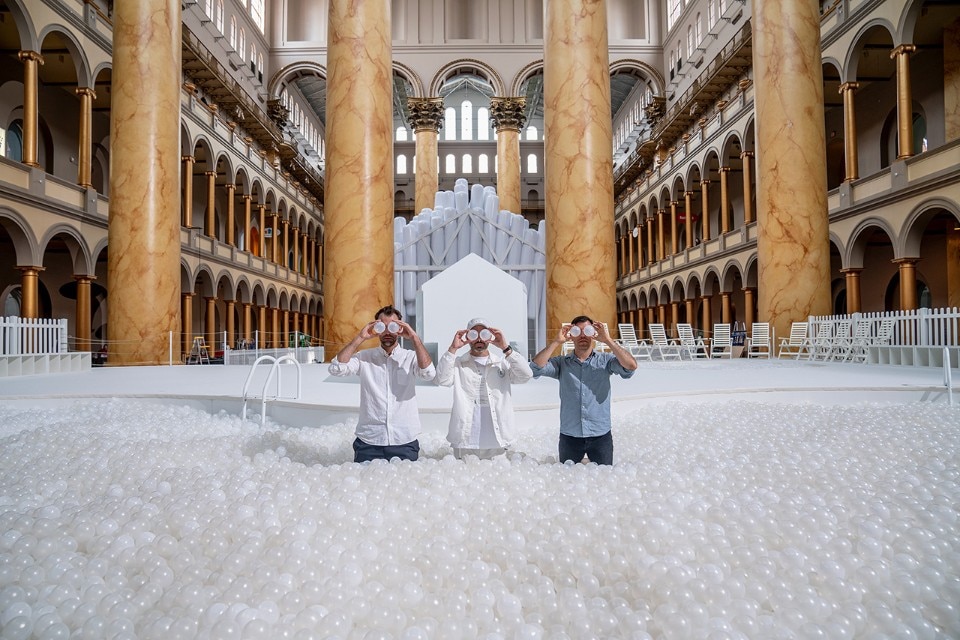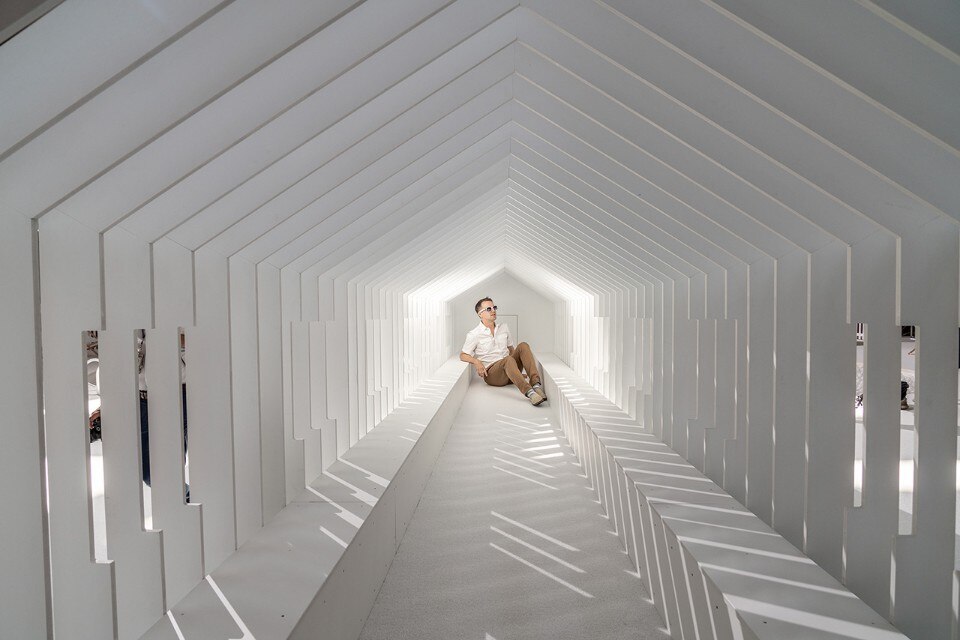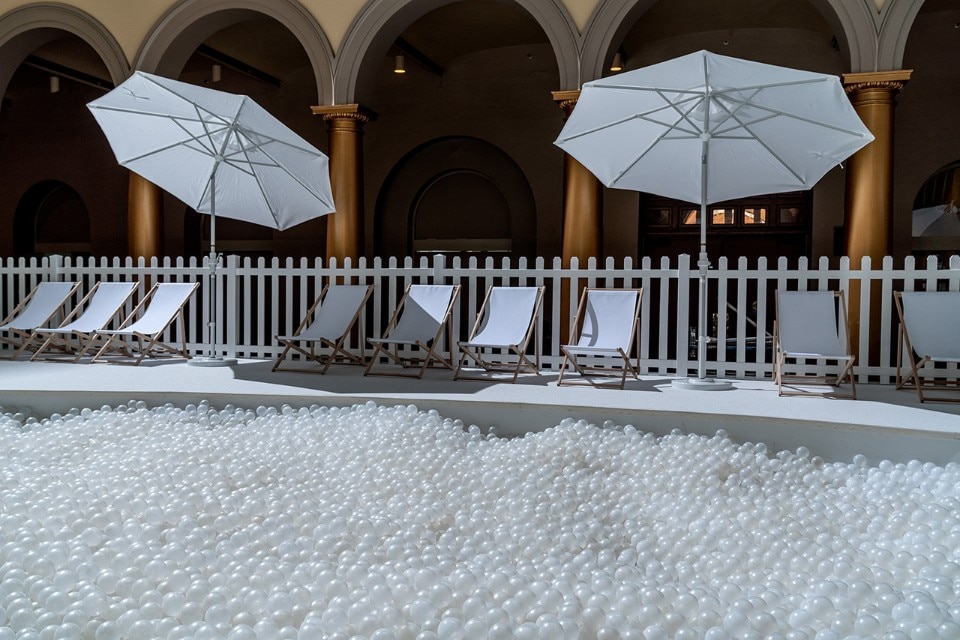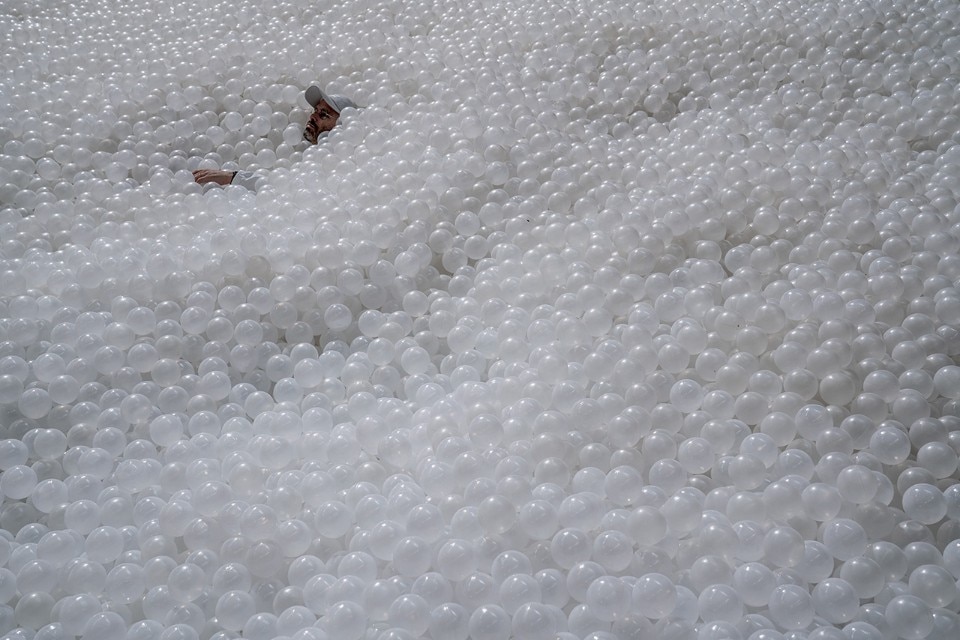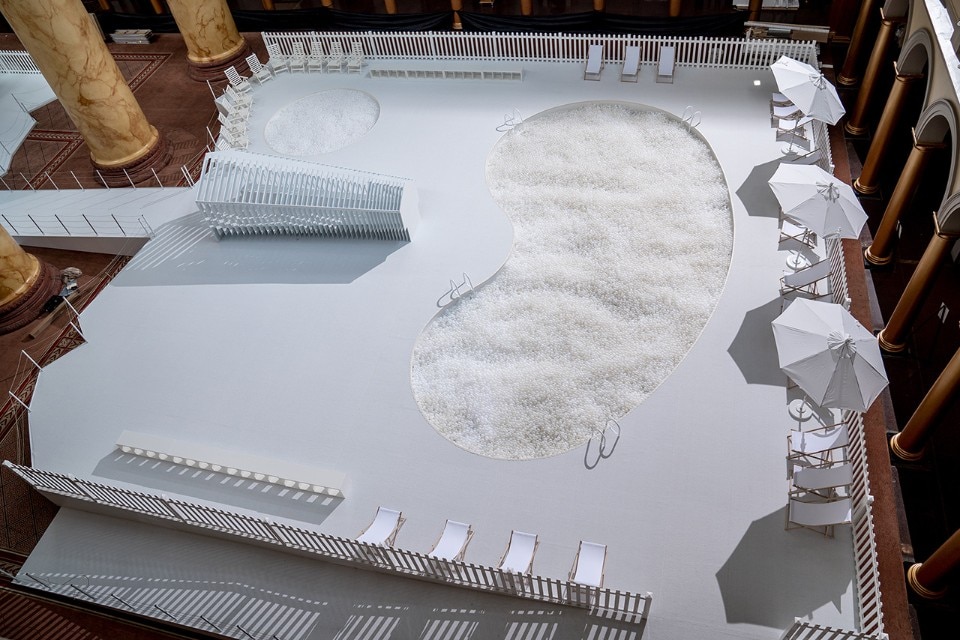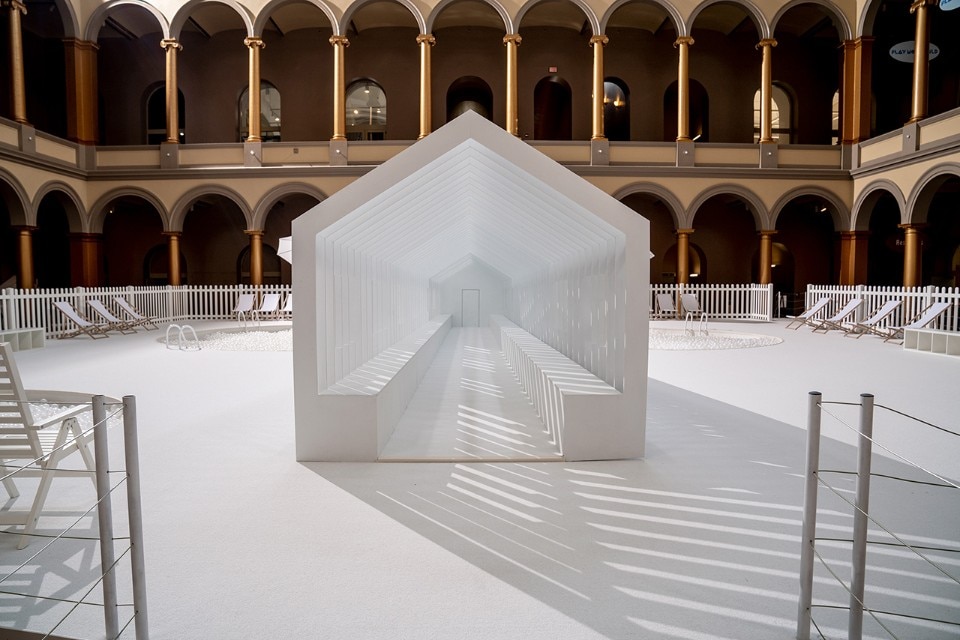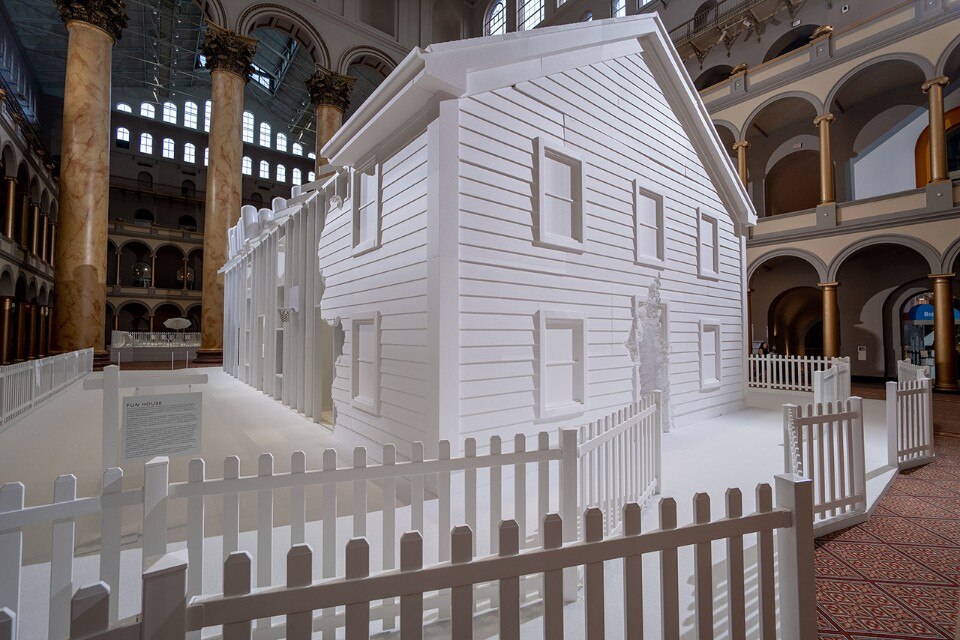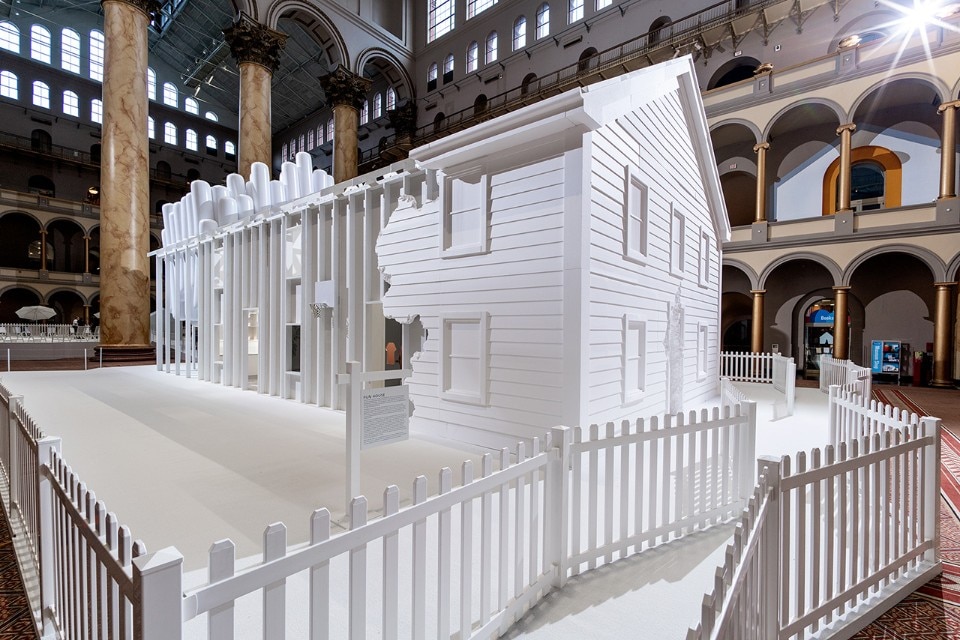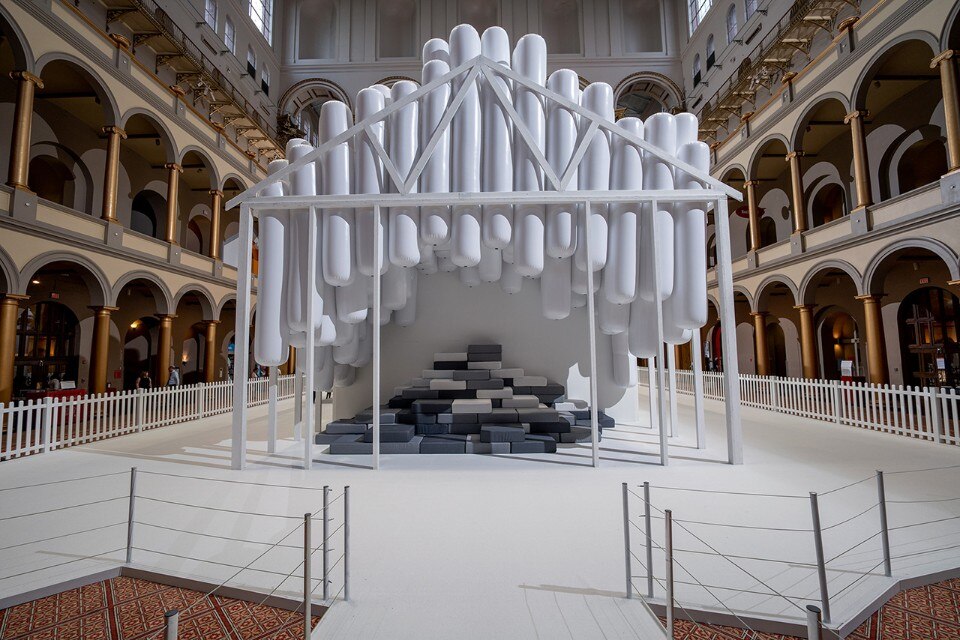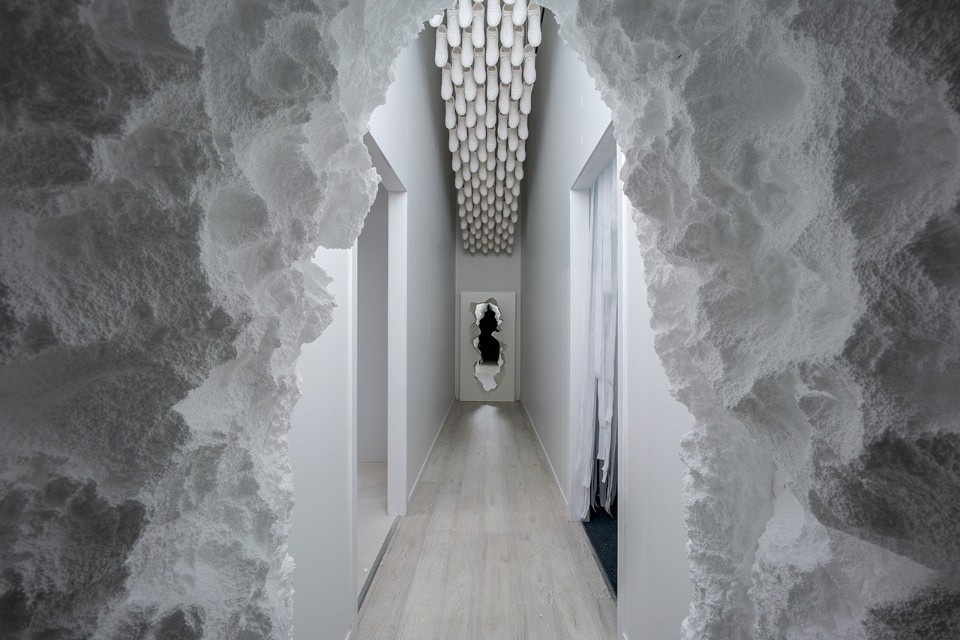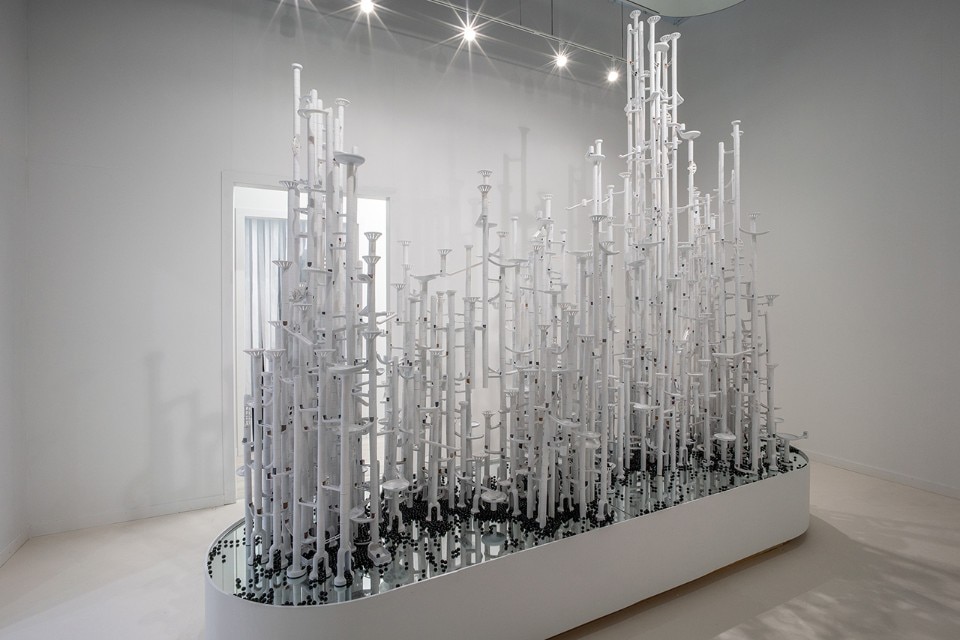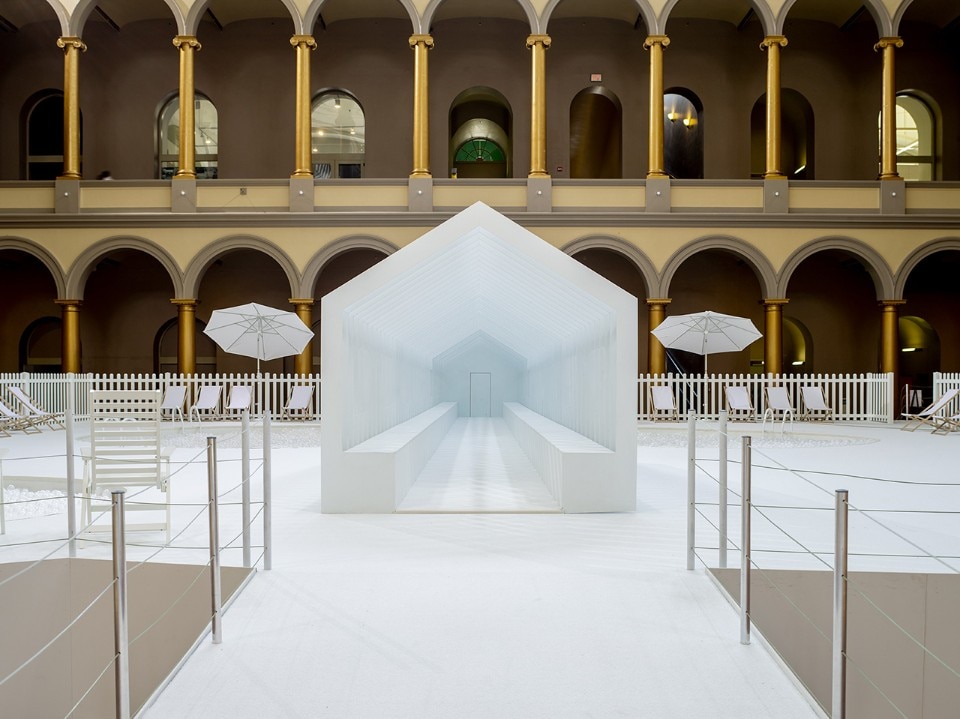A prefabricated house, typically American, all white, with a driveway and a backyard: this is “Fun House”, an exhibition organised under the curatorship of Maria Cristina Didero that looks back over ten years of work by Snarkitecture. Hosted at the National Building Museum in Washington D.C., the show opened on the Fourth of July. Snarkitecture’s name was taken from the Lewis Carroll poem The Hunting of the Snark, a nonsensical story about hunting down a creature whose appearances are unknown, with the help of a blank map. Ever since 2008, when Alex Mustonen and Daniel Arsham founded the firm in New York (Benjamin Porto joined in 2014), the quest for this unidentified object has never stopped. Snarkitecture has developed a specific visual language and become famous for its large, all-white installations and important collaborations with the brands Cos, Valextra, Kith and Calvin Klein. We asked Maria Cristina Didero, who has been working with this practice from New York for some time now, to tell us about the exhibition.
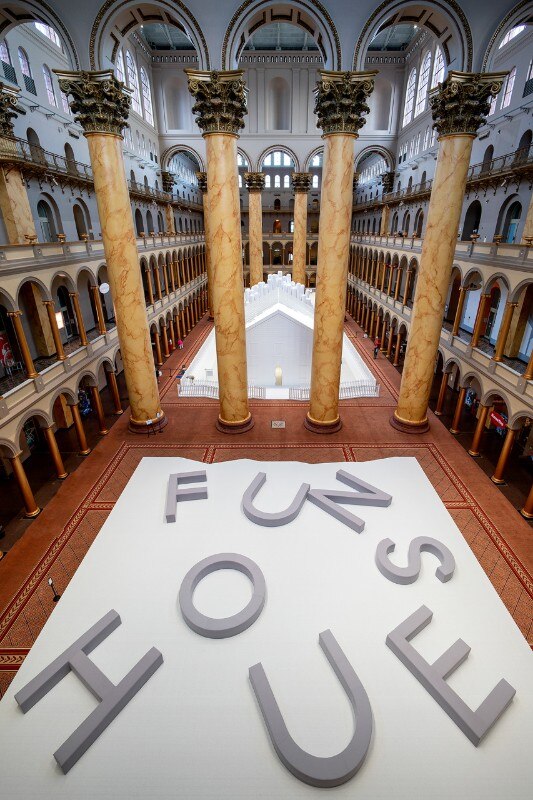
Where does the idea for the exhibition come from?
This year, Snarkitecture is celebrating its tenth anniversary. Seeing they are known for being allergic to conventions, when they asked me to organise a retrospective of their work, I thought that although the occasion was conventional, the exhibition should not be. We decided to take an utterly offbeat look at something simple, the house as a primal icon, and used it to construct the narrative of the past ten years. We built a kind of guest construction inside one of the most prestigious museums in the United States’ capital. The firm’s members had never designed a house, so we used their first one to tell their story, furnish it with their objects and welcome strangers inside. As I wrote in the curatorial text, the house is one of the first things a child draws, a square topped by a triangle. Here, it is a container inside a container. The idea was to recreate a typical American house, complete with fence, yard and swimming pool. We worked on the idea for about 18 months. The name “Fun House” gave us a storyline close to what Snarkitecture stands for: surprise, fun, play and disorientation. We developed the exhibition route according to the container. The software follows the hardware, as it were. The division into rooms is traditional, but the bathroom is not a bathroom; the kitchen is not a regular kitchen (even though we were helped by Ikea); the pool is not a normal pool. As you can imagine, it wasn’t easy to find a museum able to host an exhibition of this type.
Although the occasion was conventional, the exhibition should not be. We decided to take an utterly offbeat look at the house as a primal icon
So it was an ambitious operation from a conceptual and material point of view?
Yes. We needed to find an institution that believed in the idea of constructing a full-scale typical American house, but all white. Obviously, it also had to have enough space to contain the house. The National Building Museum (where Snarkitecture had already shown one of its better-known installations, The Beach, in 2015) was brave enough to embark on this adventure with us. So now we have a white house in Washington D.C. that is not a real house, but something else. It inaugurated on the Fourth of July, Independence Day.
Please tell us about “Fun House”.
It is the indoor reconstruction of an outdoor structure. We replicated a typical little prefabricated house with details such as the traditional sign that real-estate agents use, but instead of For Sale, we wrote the curatorial text on it. In the yard, big three-dimensional letters compose the words Fun House in a reference to the Snarkitecture installation A Memorial Bowing built in Miami in 2012. The letters are benches where visitors can sit. Spectators can interact with everything in and out of the house. In the backyard, where Americans might have a small pool and a children’s play area, we built a small version of The Beach (we couldn’t resist), a kidney-shaped pool filled with recyclable plastic balls, where children can jump in and have fun. This is the first time I have worked on a project that communicates and creates so much joy. I was speechless when I saw families with children spending hours and hours playing at the show. It is also the first time I have worked on an exhibition that was sold out for the day of the inauguration. Who knows when that will happen again? Typical household elements have been rendered with the expressive visual language that is typical of Snarkitecture, which transforms familiar things into something special.
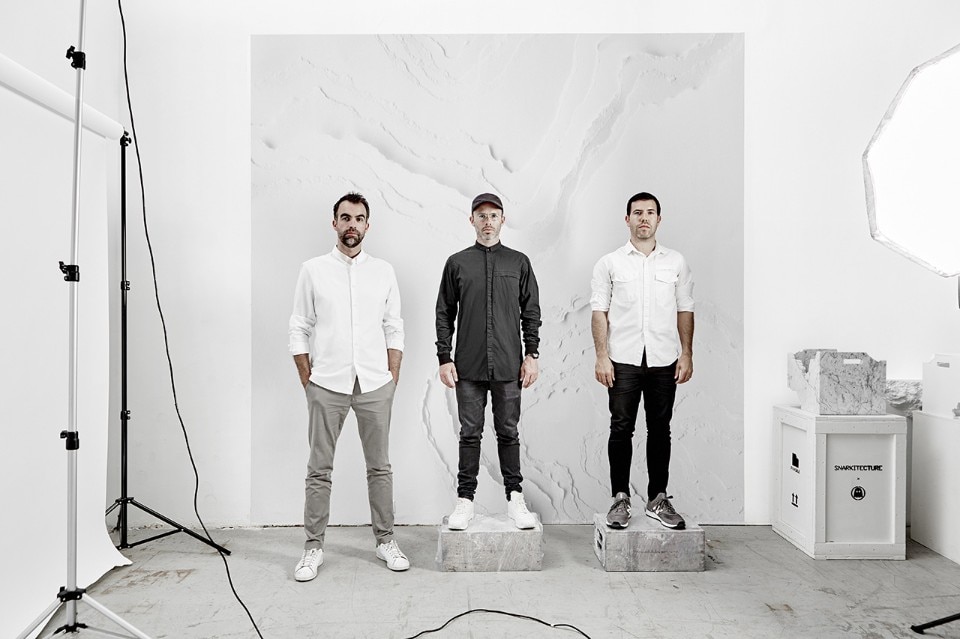
In the book about the firm’s work, published by Phaidon this year in April, your introduction begins with the question “What is Snarkitecture?” Could this show be considered an answer?
Yes. At the time, I spoke of its work by saying that its projects are both art and architecture – a mix of the two. “Fun House” is a different way of presenting its approach. We were interested in a double serving: making both the container and its contents acquire interest by being a previously unseen installation where ten years of work come together.
They are true to themselves, and succeed in being recognisable while bringing their singular touch to very diverse projects.
Was it complicated to work long-distance?
No, I’m used to it. The dialogue with them was always precise, so operations were facilitated by that. What I really appreciate about the Snarkitecture members – and this is a very important point to me – is their solidity and coherence. They are true to themselves, and succeed in being recognisable while bringing their singular touch to very diverse projects. I’m thinking of their white-cement pillow as a key tray, or the Cos installation they made for the Milan Furniture Fair three years ago. Now they are building a club. They select their interpretative codes of thought, and then translate them in their projects, whether the object is a small candle or a space of hundreds of square metres, like this show in Washington, where the museum gave us the equivalent of a soccer field. We have always been on the same wavelength and collaborate well. In order to work together with an ocean in between, you need a good deal of reciprocal trust, which is something that grew from our previous experiences. I followed the construction of “Fun House” by webcam!
- Exhibition title:
- Fun House
- Exhibition dates:
- 4 July - 3 September 2018
- Curated by:
- Maria Cristina Didero
- Venue:
- National Building Museum
- Address:
- 401 F Street NW Washington, DC 20001, United States of America


